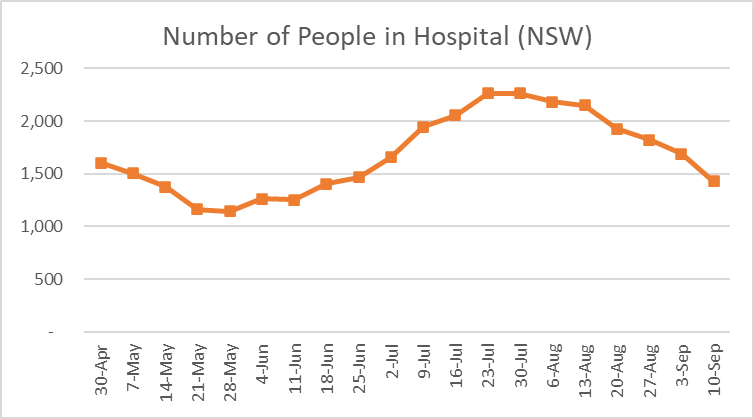The NSW epi report for the week ending 10 Sept is now out. Note that this is the week ending just before they switched from daily to weekly reporting, so nothing new on that front.
#Covid19Aus #Covid19NSW
You can find the full report here...
health.nsw.gov.au/Infectious/cov…
#Covid19Aus #Covid19NSW
You can find the full report here...
health.nsw.gov.au/Infectious/cov…
Cases are down in all age groups, ranging from -24% to -34%. And the biggest fall was in the 60+ age group. Excellent. 

This is a new graph, showing cumulative infection rates by age band since 1 Jan 2022.
The over 50s clearly much lower than other age bands. The 0-9s also lower, which may be partly real but I also suspect (no proof) that this age group may be tested less than older ages.
The over 50s clearly much lower than other age bands. The 0-9s also lower, which may be partly real but I also suspect (no proof) that this age group may be tested less than older ages.

The number of people in hospital fell by 15% this week. Awesome. I've been waiting for a double digit reduction. 

By age band, reductions in hospitalisations were mainly in the 60-79 and 80-89 age bands. Brilliant. 

Variants of concern are interesting. NSW shows two things. This first graph shows a breakdown by variant of people in hospital or those arriving from overseas (so a biased sample).
It shows an increase in BA.2.75 which some people are saying may cause the next wave.
It shows an increase in BA.2.75 which some people are saying may cause the next wave.

This second graph shows a broader picture, being the results of all tests from one of the large pathology providers. It shows the proportion with s-gene target failure (i.e. NOT any of the BA.2. strains). It shows no worrying trend. So hopefully the previous graph .... 

.... is just an anomaly due to the biased sample and is not a more widespread issue.
The end. Any questions?
The end. Any questions?
• • •
Missing some Tweet in this thread? You can try to
force a refresh
















